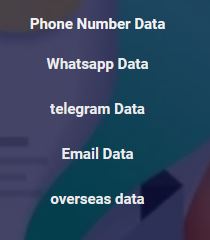Many companies rely on existing employees to show the new employees how things are done. This sometimes works well, but typically depends on the employees all working at the same location to learn in-person.
But if you have hybrid teams with some employees working remotely while others work in the office, it’s not as easy to transfer knowledge verbally or through hands-on training. To make sure that employees know what is expected and to keep everybody on the same page, it’s vital that you capture your company’s process information in well-written and detailed documentation.
Why is process documentation important?
It’s great when your employees know their jobs and current processes well malaysia telephone number data enough so they can pass that information to new employees. But companies need to be prepared if their experts aren’t always available.
For example, if you only have one person with knowledge of a specific process and nobody else has been trained on that job, what do you do when that person goes on vacation or gets another job? If processes are meticulously documented, you’ll have a good base to help somebody else step in and take over quickly.
According to a 2016 BPTrends Report, about 53% of companies never, or only occasionally, document their processes. Another 43% report that they document processes frequently or most of the time. Shockingly, only 4% said that they always document their processes.
There are plenty of reasons that organizations might not document their processes—not knowing where to start, not wanting to spend the time or effort, thinking they just don’t matter—but there are far more benefits than drawbacks.
In addition to providing detailed documentation, you should also make it a practice to ensure that more than one employee knows how to perform mission critical tasks. That way, you are double-covered when your knowledgeable employee leaves because you have someone who can step in and do the job, and you have a reliable set of documentation as your backup.
Benefits of process documentation
If it hasn’t been a practice to document your processes, you might find it difficult to get started. But it’s worth it! Some of the benefits of process documentation include:
Operational redundancy: Documentation reduces the risk of losing institutional knowledge when key talent leaves the company.
Operational consistency and compliance: Documentation becomes a single source of truth for consistent operation, quality, and compliance with industry standards and regulations.
Increased efficiency: Consistency leads to better efficiency and cost reductions.
Improved business processes: The documentation becomes your reference point for studying facts about your current processes so you can make informed recommendations for improvements.
Train new employees faster: Written processes help new employees come up to speed more quickly and can fill in any gaps that they don’t remember from the training.
Analyze and compare current processes more easily: Analysis and comparison lets you calculate efficiencies, costs, and other important metrics for your processes.
Fewer defects and higher quality: Employees who stick to the precise steps outlined in the documentation will experience fewer defects while releasing higher-quality products.
What are some challenges of process documentation?
As your company grows, it’s going to get more complex. And as your business operations get more complex, there are new challenges related to documenting processes.
Hoarding knowledge
It can be difficult to gather information you need to document processes, especially if some people are reluctant to share knowledge. Some employees don’t share knowledge about their jobs because they feel like it gives them more job security.
But, transparency and sharing information actually builds more trust, a stronger work culture, and encourages more engagement. Sharing information raises morale, encourages teamwork, and increases overall efficiency. Transparency and open communication is key to managing a successful, happy, and productive hybrid team.

Feeling self-conscious
Sometimes people will change the way they do things because it “works” for them. But if they are reluctant to tell anybody or document these changes, it could cause problems with processes later as more people join the team, and as the team grows more geographically diverse.
When a team member finds a better way to do something, it’s important to share and document that information to keep everybody on the same page. Your people shouldn’t feel like they need to hide any changes they make to the process.
Expecting the documentation to be perfect
If you have not been documenting everything from the beginning, starting now when your company is growing and spreading across multiple locations can seem daunting. Don’t think that your documentation has to be perfect from the start. Start with smaller, easier to complete tasks so you can figure out your process for process documentation. As you get more familiar with your documentation process, you will feel more comfortable tackling some of your more complex business processes.
Lacking faith in the documentation
While your process documentation doesn’t need to be perfect from the start, it still needs to be accurate. Some of your remote team members might rely exclusively on the documentation to learn processes. It can be really frustrating if steps are incomplete or poorly written. Employees will stay away from the documentation if the perception is that it’s incorrect. You need to create and promote accurate, dependable documentation.
